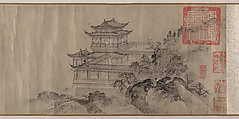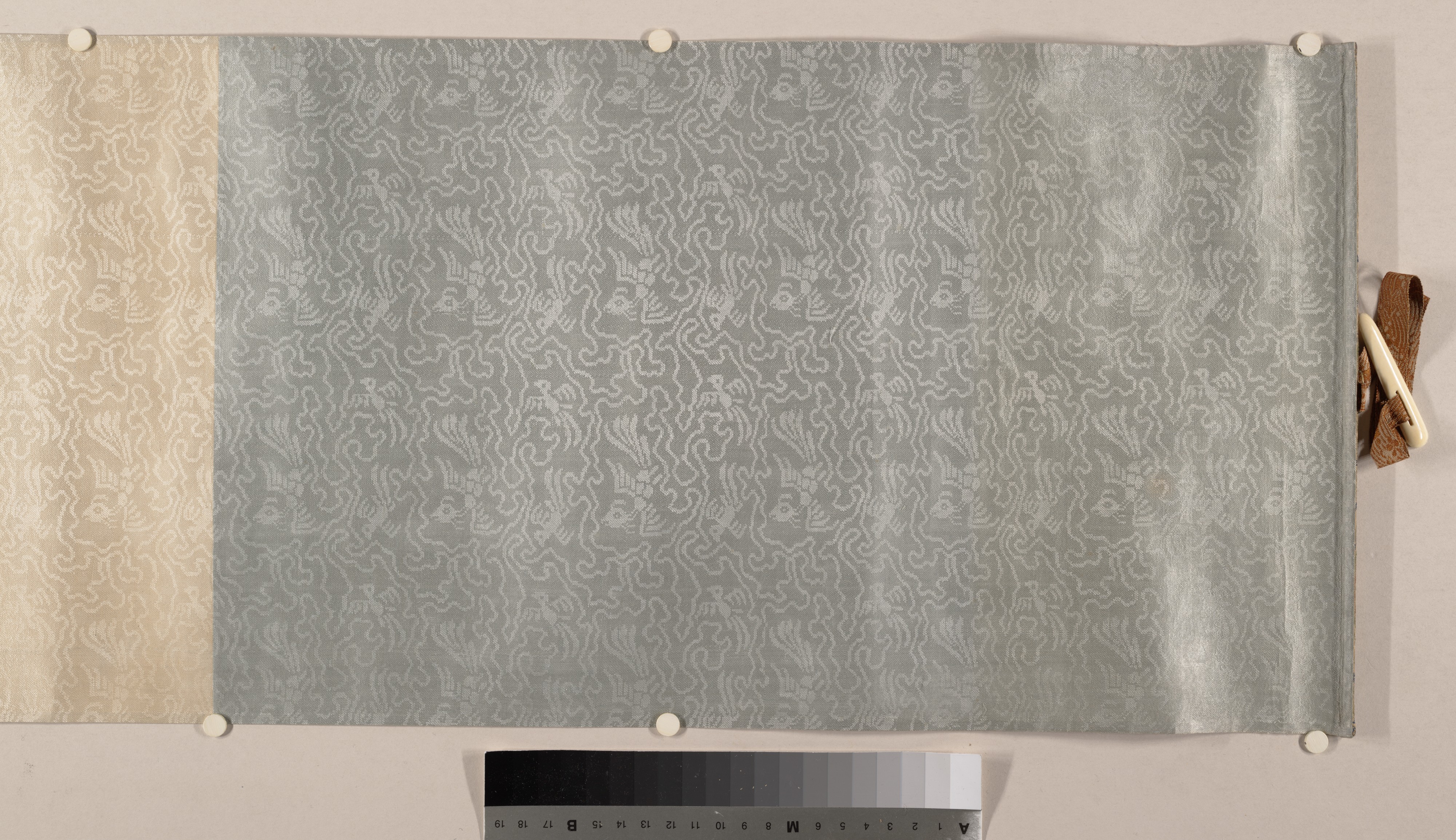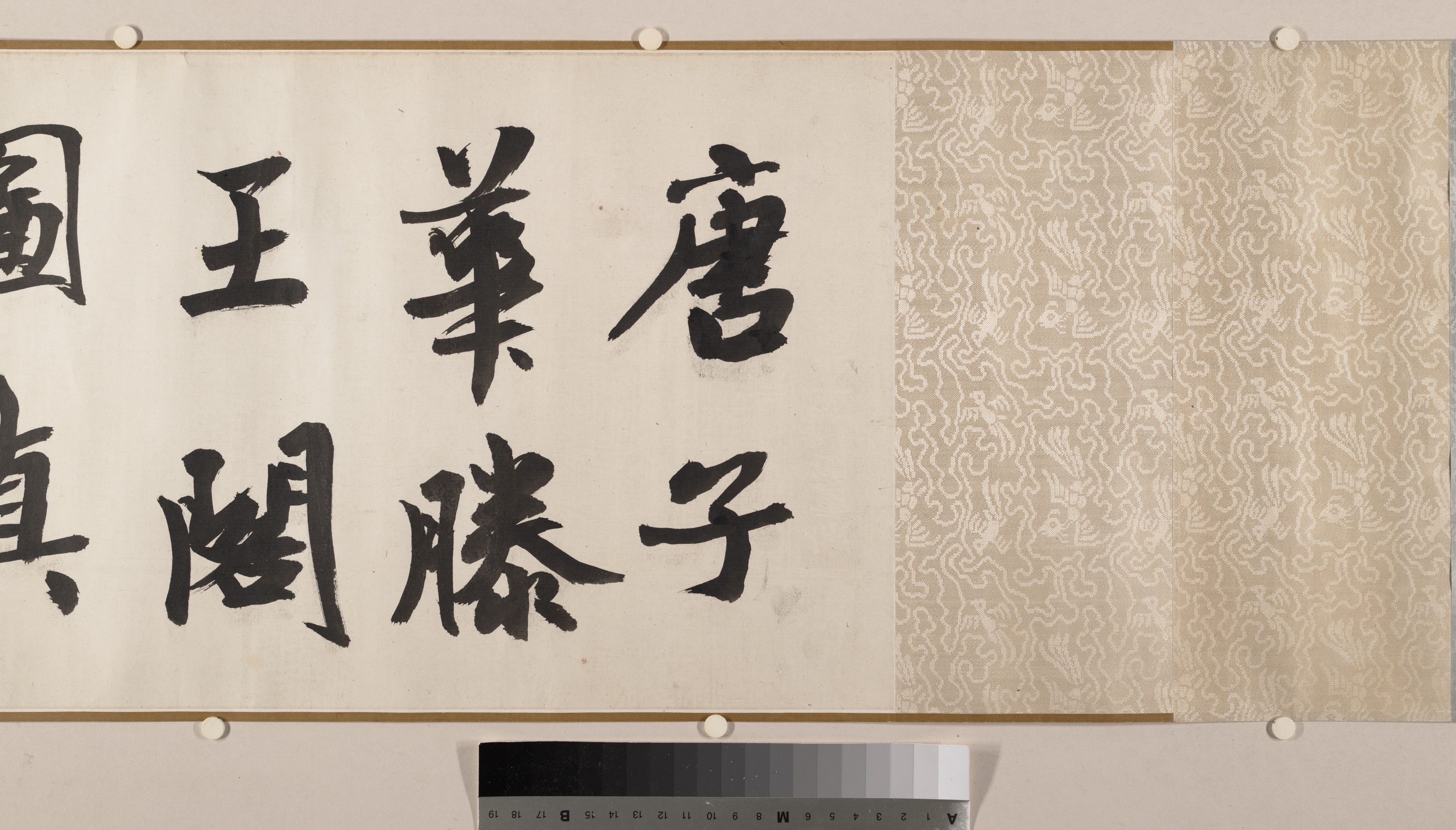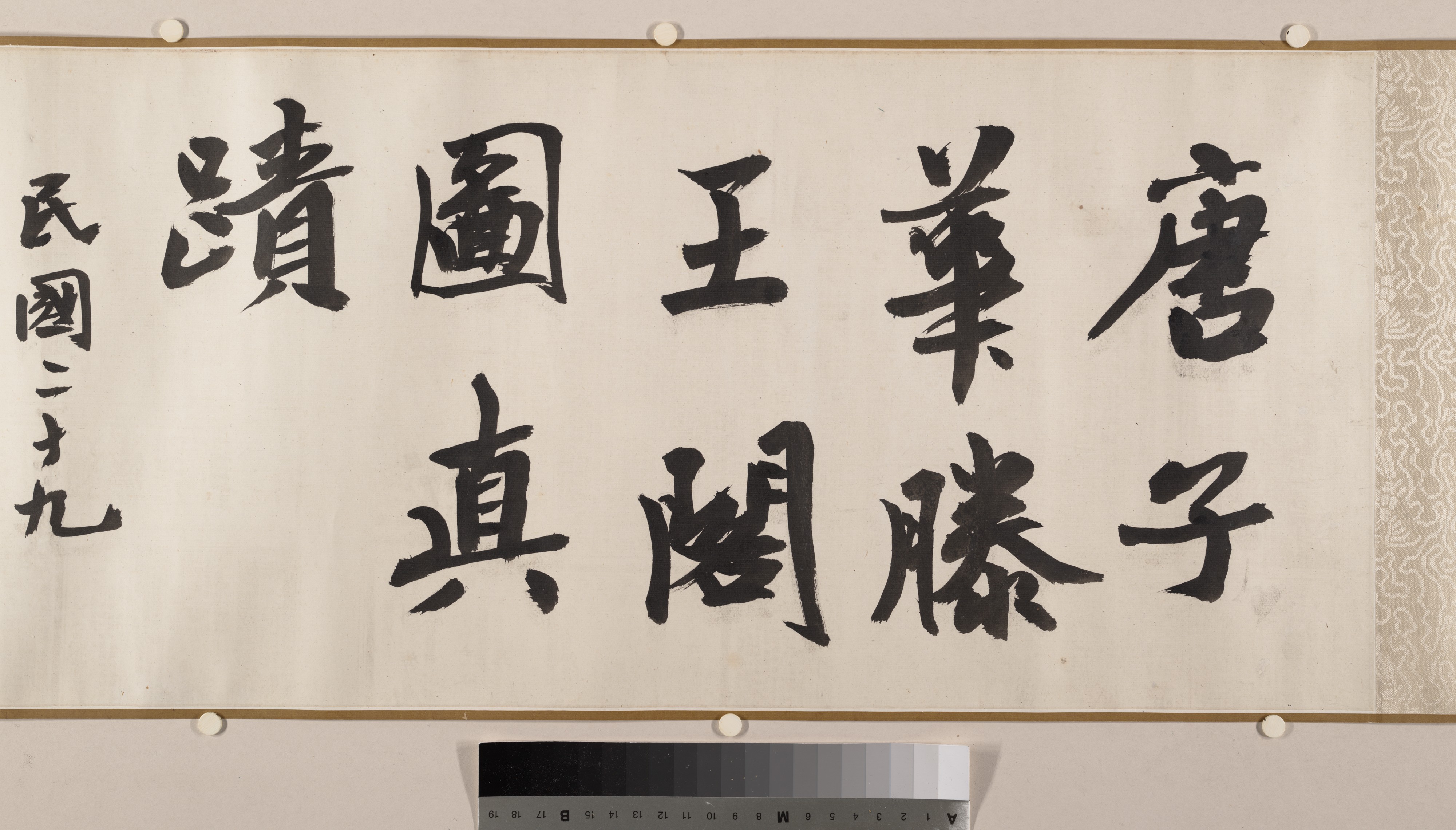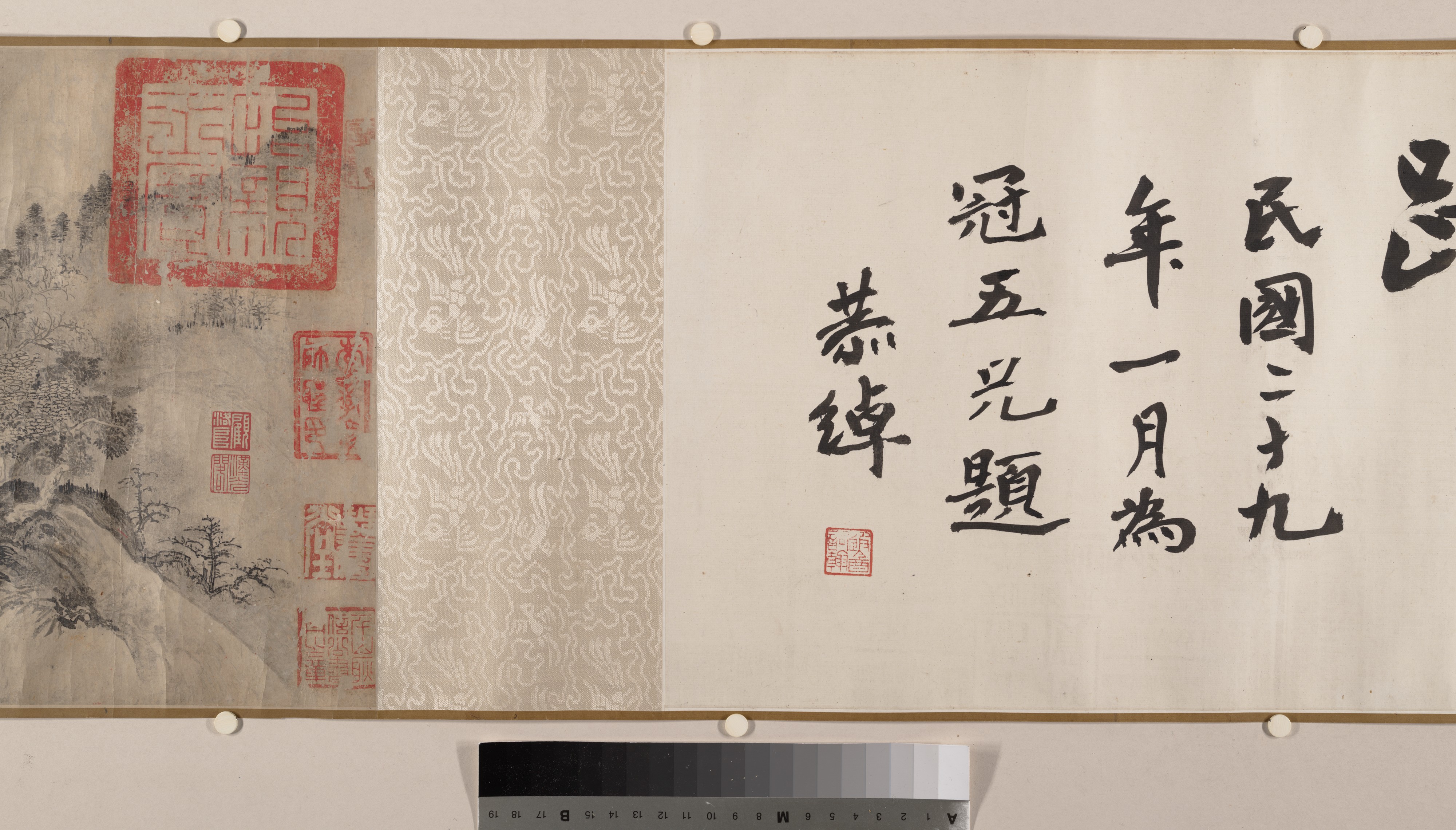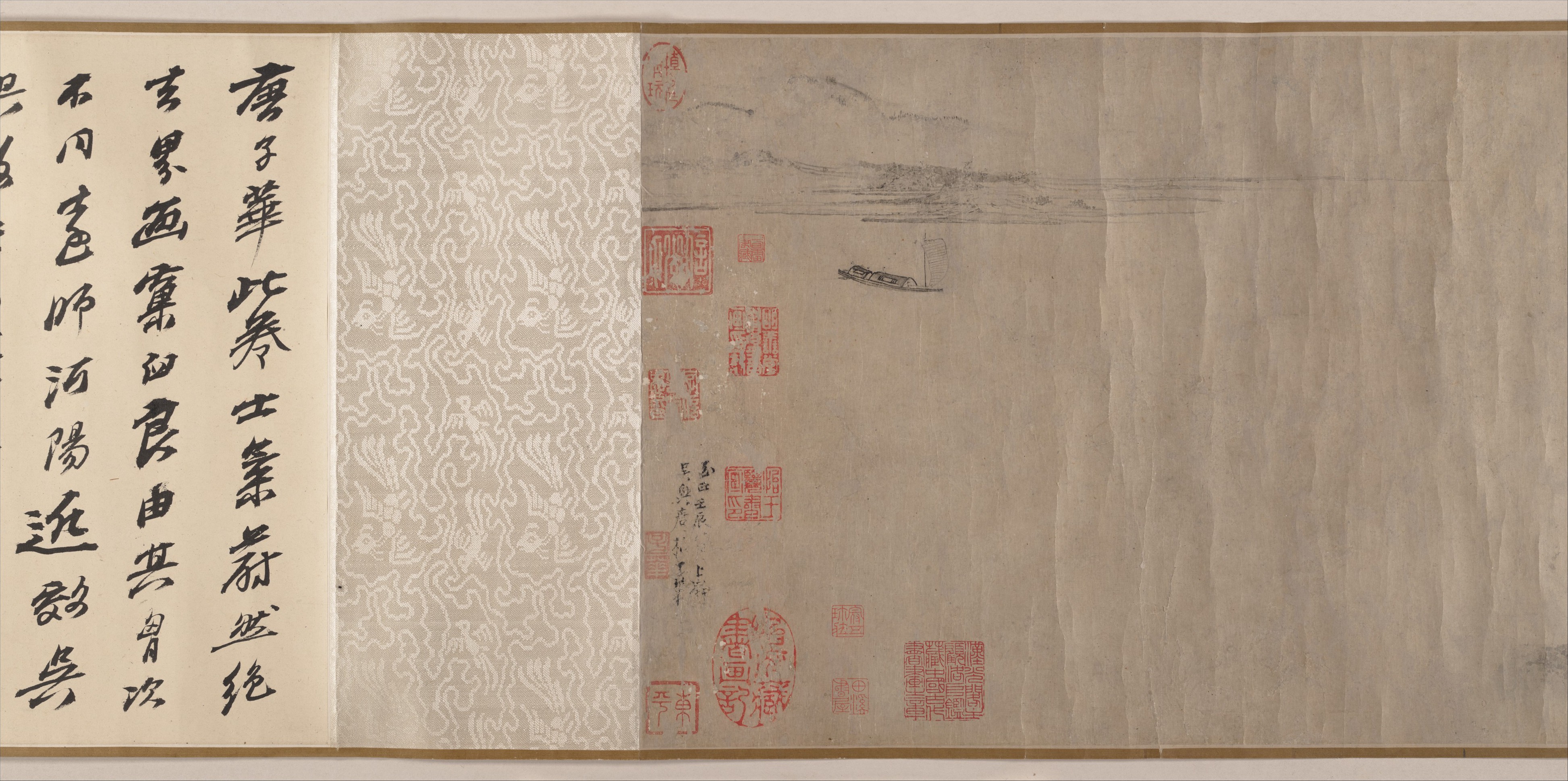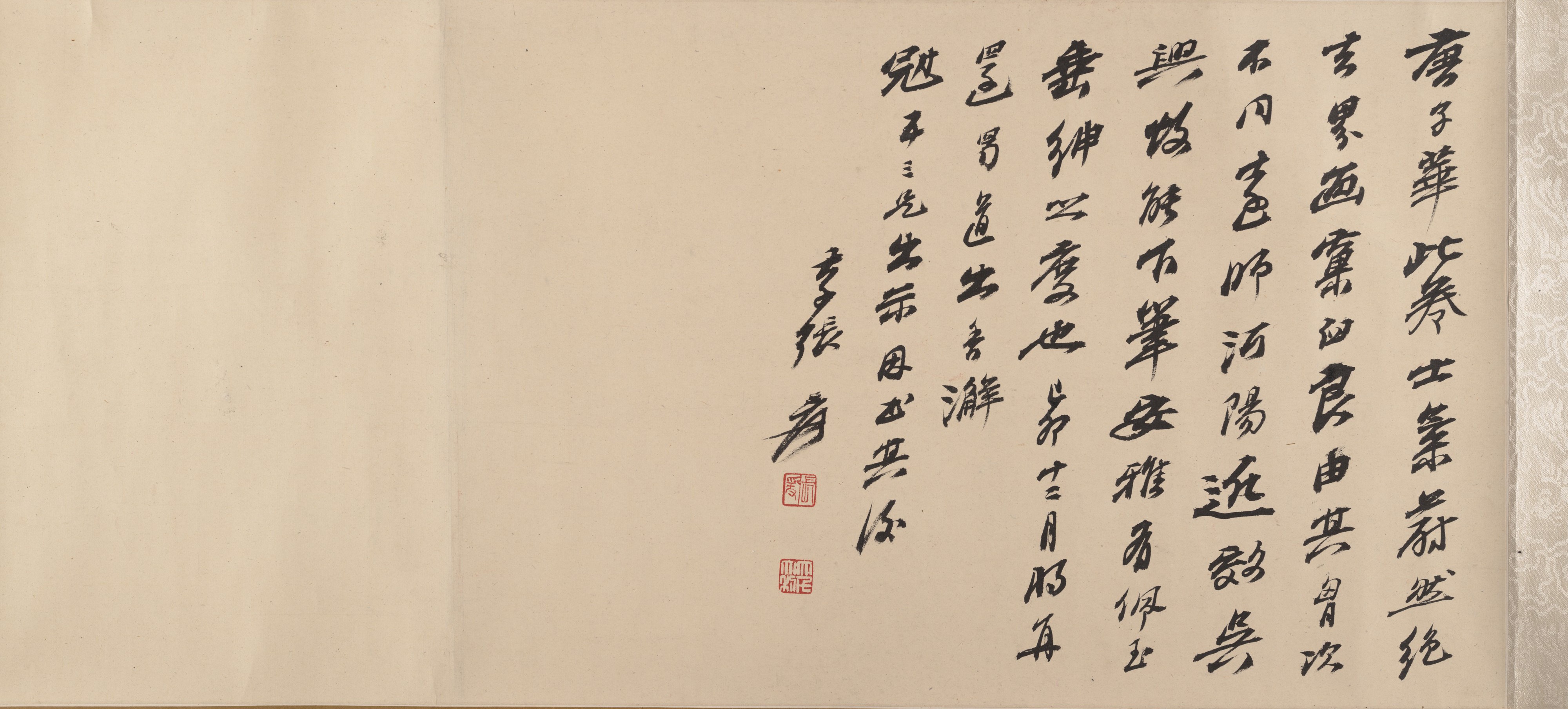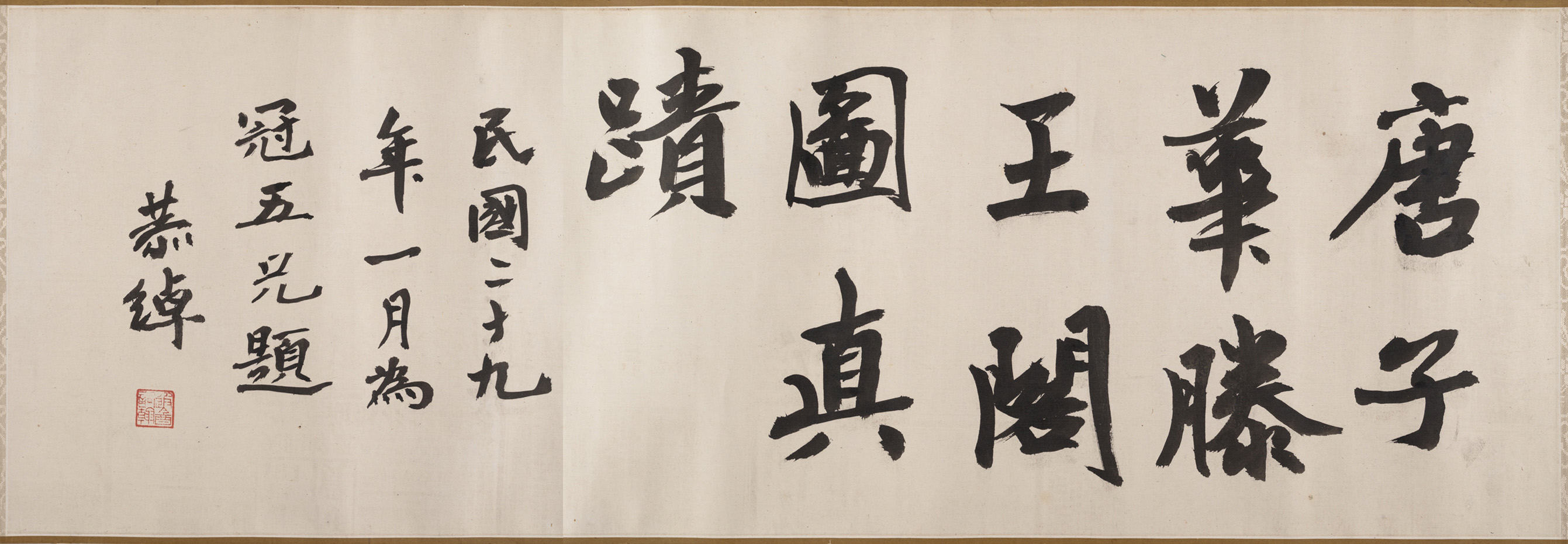The Pavilion of Prince Teng
Tang Di Chinese
Not on view
The Pavilion of Prince Teng demonstrates that Tang Di, a scholar and government official best known for his large-scale colored paintings on silk, was also capable of producing intimate, more informal ink drawings on paper. As he does in his monumental decorative style, Tang here follows the conservative brush idiom of the Northern Song master Guo Xi (ca. 1000–ca. 1090), though his relaxed calligraphic depiction of rocks, trees, and foliage reflects the early Yuan transformation of Song models by Tang Di's teacher, Zhao Mengfu (1254–1322). The pavilion, erected in the seventh century by the prince of Teng, is one of the most renowned buildings in Chinese history, thanks to the poet Wang Bo (649–676). It is situated near the confluence of the Gan and Yangzi Rivers in Jiangsi Province. Wang's poem, which contrasts the impermanence of human life with the endless flow of the river, has made the pavilion a favorite subject for painters. The large seals at the beginning of this scroll belong to Prince Yi (1686–1730), thirteenth son of the Kangxi emperor (r. 1662–1722).
Due to rights restrictions, this image cannot be enlarged, viewed at full screen, or downloaded.
This artwork is meant to be viewed from right to left. Scroll left to view more.
